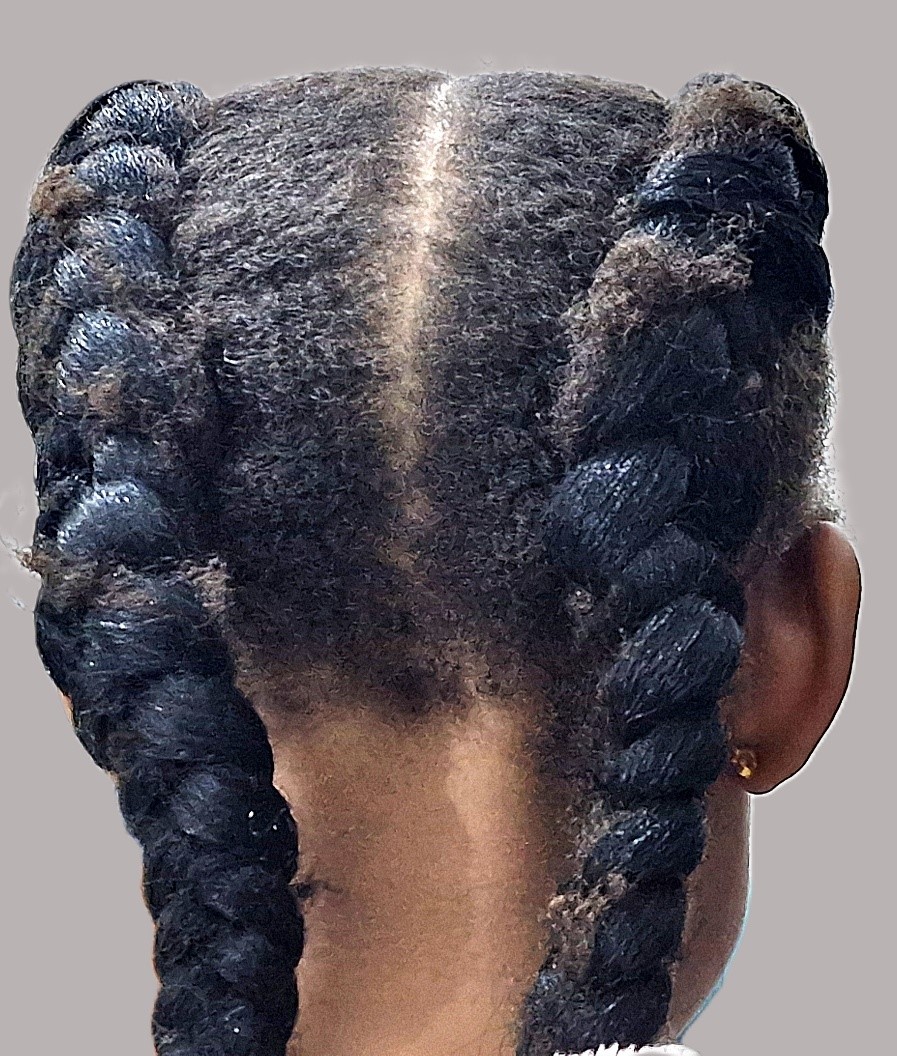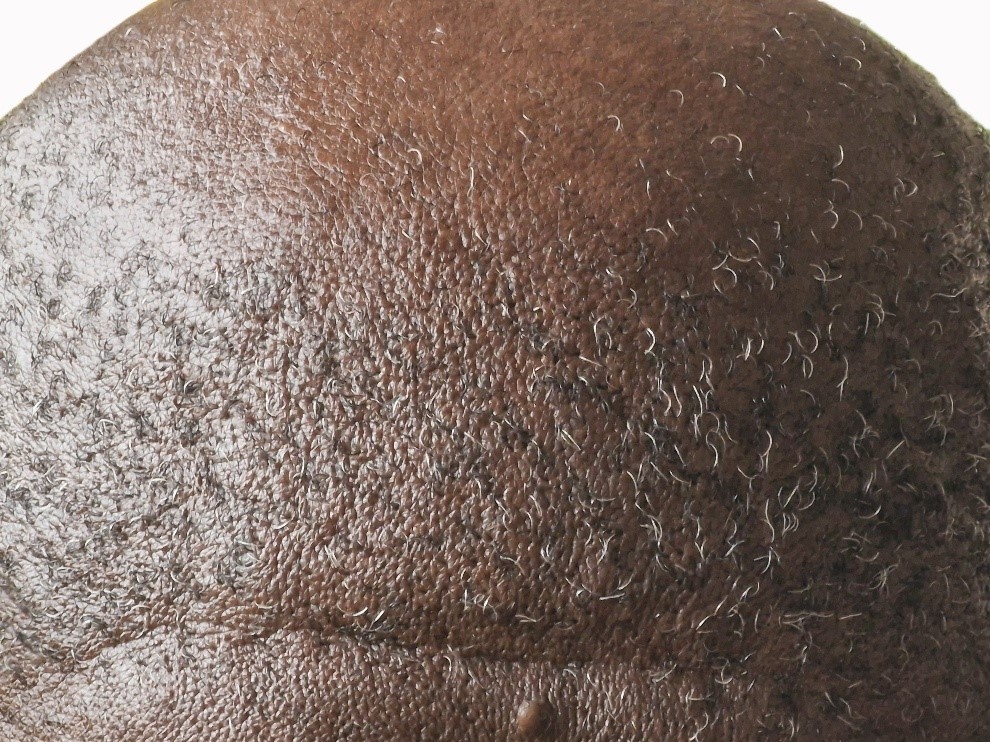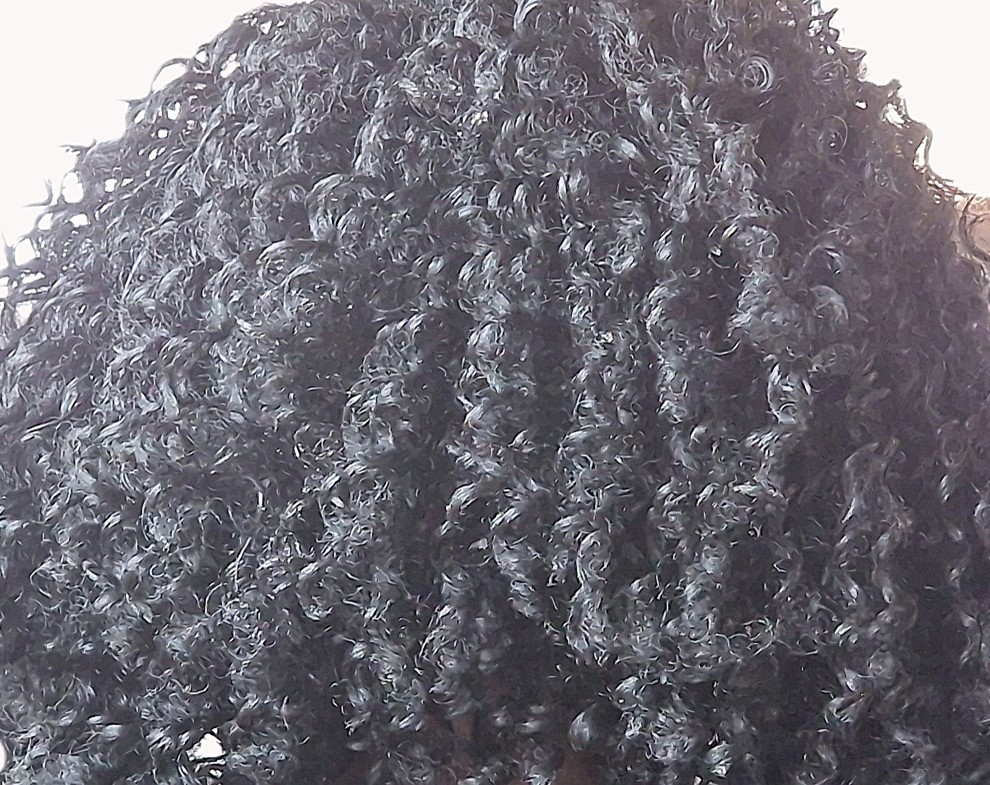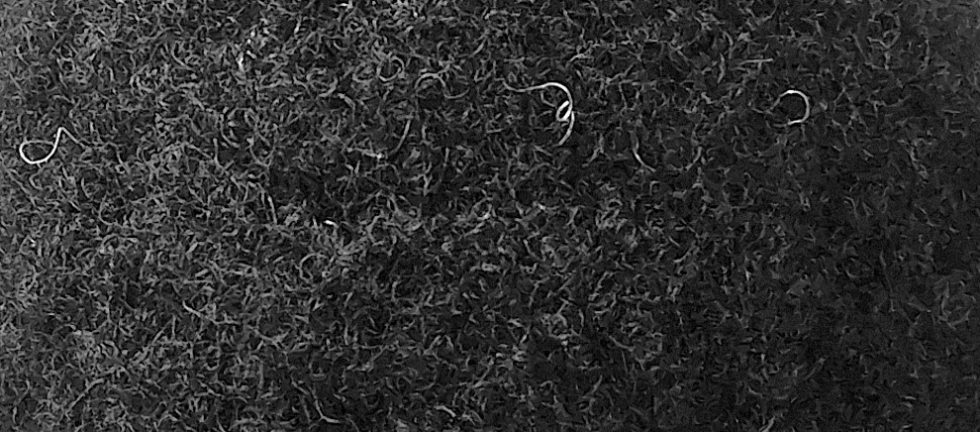These blogs which I call Fork in the Road: Reflections on Life are “fireside” musings on the reasonably long life I have lived so far. It is my way of thinking aloud over everyday issues reflecting on life’s “What”, “Why?” and “How?” and sharing my views, physically and virtually, with people around me. The topics I muse over come to me haphazardly triggered by the surroundings or interaction with people or purely out of the blue.
The Hair topic must have come to me when I was so bored, by a long-winded speaker at a function, that my eyes started wandering at the heads of the people seated in front of me and noticed the variety of ladies’ hairdos and glistening men’s scalps. Since then, I can’t keep my eyes off people’s heads for their hair styles or men’s shining scalps. This musing covers only sub-Saharan African hair. I do not have much exposure to other types of hair for my mind to wander over it.
I have all along taken hair for granted. I had never bothered to ask what it is or why we have it. Now I know that people have hair for several evolutionary, biological, and functional reasons. One is protection. Scalp hair protects the head from the sun’s ultraviolet rays and helps reduce heat loss. (Tell that to those who shave their heads.) Eyelashes and eyebrows shield the eyes from dust, sweat, and other foreign particles. Nasal hair and ear hair act as filters to prevent foreign particles from entering the body. Another reason is temperature regulation. Hair helps regulating body temperature as an insulation by trapping a layer of warm air close to the skin and distributing sweat over the skin, aiding in cooling. Another reason is sensation. Hair glands are connected to nerve endings, making hair sensitive to touch and environmental changes. It detects light breezes or insects on the skin.
Hair has long been used as a means of nonverbal communication, expressing identity, emotions, status, beliefs, or intentions.

There are distinctive hair styles indicating ethnicity or cultural identity. For example, Sikh men wear uncut hair as a sign of faith and commitment; Rastafarians wear dreadlocks for spiritual and cultural reasons. Certain hairstyles, and grooming, are subtle attraction signals. Shaving part or all the head communicates humility and religious devotion among monks.
Hair, or lack of it, can communicate age and life transitions. Grey hair naturally signals ageing and wisdom. Shaving the head can communicate mourning while non-age or gender related hair loss can communicate illness (such as cancer treatment). Hair can be used as an intentional or subconscious communicator, conveying complex personal, social, and cultural messages beyond spoken words. In short, hair is both a biological feature with practical purposes and a cultural element with social meanings.
Racial hair differences are defined by variations in texture, structure, growth patterns, and appearance, largely shaped by genetic, environmental, and evolutionary factors. African or Afro-textured hair has a coiled and very tightly curled structure. Its texture is dry and breaks easily and prone to shrinkage if not stretched. It grows slowly (less than a cm per month on average) with compact appearance. We are told that the evolutionary role of the tight curls and structure help reduce heat gain and protect the scalp from the sun in equatorial climates. Tightly curled hair creates a sort of “natural helmet,” offering thermal regulation and protection against ultraviolet radiation, also known as simply UV. Who am I to disagree with the scientists?
It is difficult to muse over hair and ignore its absence whether occurring naturally or not. The leading causes of baldness are genetic, especially male pattern baldness, linked to DHT hormone sensitivity in hair follicles. In women, hereditary thinning occurs as diffuse thinning over the crown rather than complete bald spots. Hormonal changes due to pregnancy, childbirth, menopause and thyroid disorders can also lead to hair loss. Hair can also be lost due to diseases such as ringworm or autoimmune conditions attacking hair follicles. Drugs for cancer, arthritis, depression, heart problems, gout, high blood pressure often cause sudden hair loss. Nutritional deficiencies such as lack of protein, iron, zinc, or vitamin D can contribute to hair loss. Hair loss can also be self-inflicted by tight hairstyles and chemical treatments causing hair follicle damage.
Seeing how big a role hair plays in personal grooming; its loss can be traumatic. Psychological and emotional impact of hair loss is low self-esteem or confidence, especially if baldness occurs early. It can lead to anxiety or depression in severe cases. Anyone can lose hair on their head, but it’s more common in men. Hair loss can affect just the scalp or the entire body, and it can be temporary or permanent.

Generally, hair loss itself is not a health problem, but it can be a symptom of underlying causes such as thyroid disorders, autoimmune diseases, or nutritional deficiencies. Bald areas can be prone to sunburn or injury if unprotected.
There are positive and negative cultural perceptions of male baldness. In many African cultures, aged and balding men are perceived as wise, mature, and worth respect. Some regard baldness, whether occurring naturally or adopted voluntarily, as enhancing traits of masculinity or strength. This sounds to me as old wives’ tales or fake news, in the current jargon.
Negative perceptions include loss of youthful appearance. In some societies, baldness is linked t ageing and diminished attractiveness. Female hair loss often carries greater stigma, especially if there is cultural emphasis on hair as a symbol of femininity, beauty, and fertility.
The role of hair in religion includes both growing it and getting rid of it. For example, Sikh men wear uncut hair as a sign of faith and commitment while pilgrims in Hindu traditions shave their heads as an offering. In Christianity, especially Roman Catholic monastic traditions, partial shaving symbolises religious devotion. In Islam, it is forbidden to pluck out grey hair from any part of the body, for it is the light of the Muslim on the Day of Judgment. For Rastafarians dreadlocks are a vital spiritual symbol reflecting a natural, holy lifestyle and signify strength. Wearing dreadlocks is an outward declaration of faith, cultural pride, and rebellion against colonial beauty standards.
I am not bald, I do not shave my head, I am almost totally grey and keep my silver hair trimmed. This is the vantage point from which I am musing over hair. While I understand why someone balding would shave his head to hide the hair loss, yet it begs the question whether had he lost all his hair he would be content with the situation? What is better, living with a naked head or grooming whatever natural covering you have on your head? At the expense of sounding tactless, some shaven heads beg to be covered by a hat or turban to hide them from the offensive sight they give. Shapely, beautiful naked heads are rare. If people who shave their heads saw their naked heads in totality they would probably think again.

As for fancy hairdos I can’t help asking “Why?” and “How?” I guess the simple answer to the “Why?” is to look beautiful in the eyes of the observer. I am still scratching my head over how one takes care of it or live with it? I must admit some hairdos look beautiful and attractive and serve the overt or covert purpose of drawing attention. I, however, sometimes wonder how such works of near art are preserved while body hygiene and physical activities are observed.
The word “hair” is used figuratively for example: hair’s breadth meaning a very small amount or a narrow margin; or split hairs meaning to argue or focus on trivial or overly fine details. Another use is letting your hair down meaning to relax and behave informally or freely. Get in someone’s hair means to annoy or bother someone repeatedly while hair-raising means extremely frightening or exciting. Other figurative uses are not a hair out of place meaning very neat, tidy, or perfectly arranged; make your hair stand on end meaning to frighten or shock someone; and keep your hair on meaning stay calm or don’t get upset.
These idioms and phrases show how “hair” has been woven into the English language as an expressive metaphor for smallness, appearance, and emotional response.
I hope I am not getting in anyone’s hair with my rumblings. If you feel I am getting into your hair, I say “Keep your hair on. Enjoy an old man’s lighthearted views on life and match them with yours”.
Thank you for being part of the Fork in the Road Blogs: Reflections on Life. Be sure to look out for the next episode when I will be writing about Lies. If you gathered something useful, please feel free to share the podcast. My books, Fork in the Road: Creating a future of value starting from where you are and A view round the bend. Setting goals for your life’s journey are available for purchase at Aristoc bookshops in Kampala, Uganda and online at Amazon.
Your comments on my musings are most welcome and let me know whether there is a topic you would like me to muse over.


Comments (7)
Peace Lwanga
Very interesting and enjoyable. Perhaps those who shave their heads will think twice in future
Rtn Stephen
I hope so
Robert Yiga
Fascinating Blog
Robert Yiga
Interesting Blog
Rtn Stephen
Thank you, Rtn Yiga.
Gloria Turyamureeba
Very detailed and insightful piece about something most of us don’t think much about. Hair especially for woman and girls has become a sign of more than just beauty, thank you for the depth in this article.
Rtn Stephen
Thank you Rtn Gloria. I fully understand the importance of HAVING hair for women and love the almost individualistic styles.